|
Many people know Rosa Parks as the black girl who refused to give up her seat to a white person on a bus. Even Doctor Who portrayed the story in a recent episode, but how many people know Rosa’s background? How many people know more about her than the bus incident? She is a recognisable name in the Civil Rights Movement, but is that all - just a name?
Born Rosa Louise McCauley on 4th February 1913, Rosa grew up in Tuskegee, Alabama, until her parents, Leona and James, separated. Rosa moved to Montgomery with her mother and younger brother Sylvester, where she lived on her grandparents' farm and attended the African Methodist Episcopal Church. Rosa’s mother taught her how to sew, and by the age of ten, Rosa completed her first quilt. She continued to sew while studying academic courses at the Montgomery Industrial School for Girls, making herself dresses to wear. Although Rosa enrolled at a high school set up by the Alabama State Teachers College for Negroes, she dropped out when her grandmother became unwell. In 1932, Rosa married the barber Raymond Parks, who belonged to the National Association for the Advancement of Colored People (NAACP). Rosa took on jobs as a domestic worker, but her husband encouraged her to complete her high school education, which she achieved in 1933. A decade later, Rosa joined the NAACP, becoming its first female secretary. For some time, she was also the only female member. As part of her role, Rosa investigated false rape claims against black men and the gang-rape of Recy Taylor (1919-2017), a black woman from Abbeville, Alabama. The Chicago Defender called the resulting campaign concerning the latter "the strongest campaign for equal justice to be seen in a decade." Rosa experienced “integrated life” while briefly working for the Maxwell Air Force Base, which did not condone racial segregation. This made her realise the extent of the differences between the lives of blacks and whites. Rosa also worked as a domestic and seamstress for Clifford (1899-1975) and Virginia Durr (1903-99), a white couple who encouraged and sponsored her attendance at the Highlander Folk School to learn more about civil rights in 1955. To travel to and from work and school, Rosa used public buses, which since 1900 had specific seating areas for blacks and whites. The front four rows were for whites only, and blacks were encouraged to sit at the far end of the bus. Over 75% of passengers were black, which made the rear of the bus very crowded. Blacks also had to use the back door of the bus, but on one occasion it was too crowded for Rosa, so she used the front entrance instead. After paying, the driver insisted she leave the bus and enter through the back door. As soon as Rosa had stepped out of the bus, the driver sped away. Rosa avoided that bus driver until 1955 after a long day at work. She did everything right: she entered the bus through the back door and sat in the first row of seats designated for black people. During the journey, crowds of people entered the bus, meaning many people had to stand, including white people. Seeing this, the driver asked those in the first row of black seats to stand up so the whites could sit. Whilst three blacks got up and moved, Rosa remained seated. The driver demanded her to move, and when she did not, he called the police. The police arrested Rosa and charged her with a violation of Chapter 6, Section 11 segregation law of the Montgomery City code. The NAACP bailed her out of prison that evening. “People always say that I didn't give up my seat because I was tired, but that isn't true. I was not tired physically, or no more tired than I usually was at the end of a working day. I was not old, although some people have an image of me as being old then. I was forty-two. No, the only tired I was, was tired of giving in.” - Rosa Parks, Rosa Parks: My Story, 1992 Rosa Parks was not the first person to refuse to give up her seat, but her actions inspired the NAACP to organise a bus boycott. On 5th December 1955, the day of Rosa’s trial, campaigners distributed 35,000 leaflets saying: “We are ... asking every Negro to stay off the buses Monday in protest of the arrest and trial ... You can afford to stay out of school for one day. If you work, take a cab, or walk. But please, children and grown-ups, don't ride the bus at all on Monday. Please stay off the buses Monday.” That day, over 40,000 black people walked to work instead of getting the bus. Some had to walk more than 20 miles through the driving rain. As Rosa’s trial continued, so did the bus boycott. For 381 days, black people in Montgomery avoided using the bus. Since they made up at least 75% of commuters, the bus companies suffered from a loss of bus fares, forcing the city to repeal its law about segregation on public transport. Rosa did not wish to take credit for this success, and Martin Luther King Jr agreed that Rosa was not the cause of the boycott but the catalyst: "The cause lay deep in the record of similar injustices." Although Rosa became an icon of the Civil Rights Movement, she suffered as a result. She received many death threats, disagreed with King’s approaches, and both she and her husband lost their jobs, prompting them to move to Hampton in Virginia in search of work. Rosa found a position as a hostess but soon moved to live with her brother in Detroit, Michigan. Her brother believed the discrimination against blacks to be less severe in the northern states, but Rosa failed to see any improvements. When African American John Conyers (1929-2019) stood for Congress, Rosa gave him her full support and convinced King to do the same. After Conyers' election, he hired Rosa as his secretary and receptionist, a position she kept until she retired in 1988. She visited schools, hospitals and facilities with and on Conyers’ behalf, plus attended Civil Rights marches across the country. During this time she became an ally of Malcolm X. She later took part in the black power movement. Rosa continued to support the Civil Rights Movement in various ways, although she never took up a leading position. During the 1970s, she helped to organise the freedom of several prisoners whose actions of self-defence had landed them in police custody. Unfortunately, Rosa could not contribute much later that decade due to the poor health of her family, although she donated what little money she could to the cause. In 1977, both her husband and brother passed away from cancer. Following these losses, she broke two bones after slipping on an icy pavement, prompting her to move in with her elderly mother in an apartment for senior citizens. Her mother passed away in 1979 aged 92. With renewed vigour, Rosa returned to the Civil Rights scene, co-founding the Rosa L. Parks Scholarship Foundation to provide scholarships for college students. When asked to speak at various organisations, Rosa usually donated her speaking fee to her scholarship foundation. Later, she established the Rosa and Raymond Parks Institute for Self Development, which aimed to "educate and motivate youth and adults, particularly African American persons, for self and community betterment.” In her later years, Rosa faced several challenges. At 81, a man broke into her house and demanded money. When she refused, he attacked her, landing her in hospital with facial injuries. Naturally, Rosa suffered severe anxiety after the attack and moved to a secure complex. Whilst she felt safe there, her fragile mind made it difficult for her to manage her finances. In 2002, she received an eviction notice due to lack of rent payment. When members of the public found out, the Hartford Memorial Baptist Church in Detroit raised funds to pay the rent on her behalf, allowing her to remain in her home for the remainder of her life. Rosa Parks passed away at age 92 on 24th October 2005. Before her funeral, a bus, similar to the one on which she refused to stand, drove her casket to the US Capitol in Washington DC where she became the first non-government official to lie in honour in the rotunda. At her memorial service, the United States Secretary of State Condoleezza Rice (b.1954) said she believed that if it had not been for Rosa Parks, she would not be Secretary of State today. At her death, Rosa left an extensive list of legacies, which continues to grow. Long before she passed away, places were named in her honour, such as Rosa Parks Boulevard in Detroit, and she received many medals and awards: Martin Luther King Jr. Award (1980), Presidential Medal of Freedom (1996), Congressional Gold Medal (1999), and several honorary doctorates. Since her death, the Rosa Parks Transit Center has opened in Detroit; Michigan renamed a plaza Rosa Parks Circle; the asteroid 284996 Rosaparks was named in her memory; and the Rosa Parks Railway Station opened in Paris. Americans also remember Rosa Parks with a statue in Montgomery, unveiled in 2019.
0 Comments
This article was originally posted on www.hazelstainer.wordpress.com on 18/12/20. Hazel has kindly allowed us to repost her work to coincide with our blogs about Black Lives Matter. In the National Gallery, is a painting called The Sharp Family by Johann Zoffany (1733-1810), a German neoclassical painter. Zoffany, who spent his early years in England under the patronage of George III (1738-1820) and Queen Charlotte (1744-1818), captured the Sharp Family making music aboard their pleasure boat, Apollo, with All Saints Church, Fulham in the background. The Sharp siblings regularly appeared on the River Thames with their instruments to entertain the public on the banks. Produced between 1779-1781, Zoffany’s painting indicates the wealth of the family through the portrayal of the upper-class fashions of the 18th century. Their musical boating parties attracted many people, evidencing their popularity, particularly among local dignitaries and even royalty. Yet, the family came from a more humble background. The siblings grew up in Durham with their parents, Thomas Sharp (1693–1759), Archdeacon of Northumberland, and Grace Higgons, the daughter of English clergyman and travel writer George Wheler (1651-1724). Although they had an honourable upbringing, they did not have the financial advantages of the upper classes. Through sheer determination, love of music and fondness for each other, the Sharps worked their way up the ranks, first giving recitals at one of the brother’s home, before performing fortnightly water-borne concerts on their large barge between 1775-1783. Seated in the centre of the painting is the most well-known of the Sharp siblings. Granville Sharp, born in Durham in 1735, played a variety of instruments, including the clarinet, oboe, flageolet, kettle drums, harp and a double-flute. He also sang with an impressive bass voice, which George III described as “the best in Britain”. Respected for his musical skills, Granville often signed his name G#, but it was not only in music that he made his name. At the time of Granville’s birth, he had eight older brothers, although only five survived infancy. Five sisters soon followed, bringing the total number of children to 14. Their parents put away money for the children’s education, but by the time Granville reached his teens, the money was exhausted. Although he began his schooling at the all-boys school in Durham, Granville and his siblings received most of their tuition at home. At the age of 15, Granville travelled to London to work as an apprentice for a linen draper. He found the work tiresome and longed for opportunities to hold discussions, arguments and debates. To fuel his passion, Granville took an interest in his fellow apprentices, learning Greek in order to debate the orthodox Bible with a Socinian colleague (someone who believes in God and Christian ideals but not the divinity of Jesus). He also learnt Hebrew so as to have theological discussions with a Jewish friend. Not all of the Sharp brothers entered apprenticeships. The eldest, John, followed his father’s footsteps and was ordained into the Church. Whilst their father had not found wealth in that position, John worked hard to establish a miniature welfare state in his home in Bamburgh Castle, Northumberland where he was the perpetual curate. During his career, John oversaw the establishment of a school, a library, a hospital, and the first lifeboat service. At the age of 14, William Sharp (1729-1810) moved to London to study surgery. His exceptional skill and demeanour attracted the patronage of George III, who hired William as his private surgeon. After attending to Princess Amelia (1783-1810), who was often in poor health, the king offered William a baronetcy, which he turned down. Although William was well-off, he never forgot his past and paid attention to the needs of the poor. He considered his high position in society to be a stroke of luck, so established a free surgery for those denied such good fortune. Like Granville, his brother James came to London as an apprentice. After completing his apprenticeship in ironmongery, James rose through the ranks to become a pioneer of the industrial revolution. James enjoyed making music in his spare time, often meeting with Granville and William, as well as his sisters Elizabeth and Judith who had also moved to London. The siblings usually met at William’s house in Mincing Lane, where they also gave concerts. Unfortunately, James passed away before the family began performing on the Thames. Granville’s apprenticeship came to an end in 1757, the same year both his parents passed away. He quickly secured himself the position of Clerk in the Ordnance Office at the Tower of London, a civil service position, that also provided enough free time to pursue his musical talents and intellectual hobbies. Being so close to his siblings, both familially and geographically, allowed his passion for music to flourish. He also discussed his work with his brothers, who informed him of the goings-on in their careers. On a visit to William’s surgery in 1765, Granville met a young black slave with severe wounds to his head. The slave, Jonathan Strong, originally from Barbados, received the injuries from his master David Lisle, who bashed the young lad repeatedly over the head with a pistol. After almost blinding him, Lisle discarded Strong on the streets where he was discovered and taken to William’s free surgery. Granville assisted William to treat Strong, but his condition was so severe, they needed to transfer him to St Bartholomew’s Hospital. Out of the kindness of their hearts, Granville and William paid for Strong’s four-month stay. After Strong left hospital, the Sharp brothers continued to look after him. When he was strong enough, they found him employment with a Quaker apothecary, where he worked for a year and a half before being discovered by his previous master. David Lisle, a lawyer, believed he still owned Strong, despite discarding him in the street two years previously. Lisle wished to sell Strong to his friend James Kerr of Harley Street for £30. Kerr owned a plantation in Jamaica and wanted to ship Strong to the Caribbean to work there. Lisle and Kerr employed two men to kidnap Strong but did not anticipate the slave’s new contacts. Following his capture, Strong managed to get word to Granville, who immediately went to the Lord Mayor of London to plead his case. The Lord Mayor, possibly Sir Thomas Davies, in turn, spoke to Lisle and Kerr about their claim on the slave. Kerr produced the bill of sale to prove he had purchased Strong from Lisle, but without more evidence, the Lord Mayor ordered Strong’s release from his imprisonment. The case, however, was far from over. Almost immediately after his release, a second kidnap attempt took place, this time by West India Captain David Laird, who threatened to take Strong straight to James Kerr. Fortunately, Granville witnessed the attack and claimed he would charge Laird with assault if he did not let the young man go. Meanwhile, Lisle tried to sue Granville £200 for taking his property. When Granville approached his lawyers on the subject, they told him Lisle had every right to claim Strong as his possession. Unable to “believe the law of England was really so injurious to natural rights,” Granville spent the following two years studying English laws. Lisle soon gave up the fight, but Kerr remained determined to win his case. After two years of persisting, the court dismissed the case and fined Kerr for time-wasting. For the first time in his life, twenty-year-old Jonathan Strong was a free man. Sadly, his freedom did not last long, and he passed away five years later. Granville’s association with Jonathan Strong earned him the moniker “protector of the Negro”. A couple of slaves approached Granville for support, hoping for similar results, but the courts were reluctant to be involved in human possession disputes. At this time, British organisations were the largest slave traders in the world. Slave labour was vital for the British economy, therefore, owners were reluctant to free their slaves. Determined to put an end to slavery, Granville published A Representation of the Injustice and Dangerous Tendency of Tolerating Slavery: Or Admitting the Least Claim of Private Property in the Persons of Men in England in 1769. He expressed the view that “the laws of nature” make everyone equal and it is only laws imposed by society that state otherwise. He demonstrated that slavery was illegal because the freedom of a man was priceless. Granville received support from James Oglethorpe (1696-1785) of Cranham Hall, the founder of the American state of Georgia. Together, they unsuccessfully attempted to convince British leadership to give slaves the same rights as Englishmen. Slavery had never been authorised by law in England and Wales. Granville used this to his advantage when learning of the plight of another black slave in 1772. James Somerset, an enslaved African, travelled to England with his American owner Charles Stewart in 1769 but managed to escape a couple of years later. Unfortunately, slave hunters found Somerset and locked him in a ship bound for Jamaica. Before Somerset attempted to flee, Charles Stewart had him baptised as a Christian. On learning of his capture, three of Somerset’s Godparents complained to the courts. When Granville heard of the case, he supplied the lawyers supporting Somerset with his formidable knowledge of English laws. Granville proved that slavery was illegal under English law, so Somerset became a free man the moment he stepped on English soil. Although the court case lasted five months, the Chief Justice of the King’s Bench, William Murray, Lord Mansfield (1705-93), announced James Somerset’s freedom and ended the proceedings. Somerset and his supporters celebrated the result, but this was not the end of slavery. Whilst it was illegal to own a slave in England, the law condoned using slaves in overseas territories. Plantation owners in the Americas continued to exploit slaves, abducting them from their homes in Africa and forcing them to work in harsh conditions in a foreign land. In 1781, 60 slaves died from neglect and over-crowding aboard the British slave ship Zong, causing the crew to take drastic action, massacring over 130 slaves by throwing them overboard. To add to the morally corrupt event, the shipowner tried to claim compensation for the loss of his property at sea. Granville learnt of the massacre in 1783 from Olaudah Equiano (1745-97), a freed slave from the Kingdom of Benin. Horrified by the events aboard the Zong, Granville immediately involved himself with the court case against the Liverpool merchant claiming insurance. The merchant’s lawyer John Lee (1733-93) claimed: “the case was the same as if assets had been thrown overboard.” Granville argued that jettisoning slaves was murder and should be punished accordingly. Unfortunately, the judge dismissed Granville’s accusation but ruled the slave owner could not file for insurance due to lack of evidence. The more Granville learnt about the lives of slaves, the greater his wish to abolish slavery entirely. He was not alone with this wish, but the largest groups of anti-slavery protesters were Quakers, a domination forbidden from participating in Parliament. In 1787, nine Quakers and three Anglicans established the Society for Effecting the Abolition of the Slave Trade, but to make an impact, they needed someone with parliamentary connections. A vote unanimously elected Granville, one of the Anglican founders of the society, to present their petitions. Due to modesty, Granville refused to chair the meetings for the society but regularly attended for the following twenty years. Parliament rejected many of their petitions, but they continued to work tirelessly nonetheless. The society received support from other anti-slavery campaigners, including the founder of the Wedgwood company Josiah Wedgwood (1730-95), who arranged the production of anti-slavery medallions, and the politician William Wilberforce (1759-1883), who presented the first Bill to abolish the slave trade in 1791, albeit unsuccessful. Through Granville’s connections, the society also received support from abolitionists in America. Granville made attempts to return freed-slaves in Britain to their native countries. Many worried they would return to slavery, so Granville drew up plans for a new Christian society called “The Province of Freedom”. The first attempt struggled from the start, with fires on ships and many Africans returning home before the plans were fully operational. The first settlement, named Granville Town, lasted a few months before local tribes burnt it down. A second attempt to create “The Province of Freedom” proved more successful. With the help of a former American slave, Thomas Peters (1738-92) and British brothers, Thomas Clarkson (1760-1846) and John Clarkson (1764-1828), Granville helped to found the port city Freetown in Sierra Leone. In 1807, the society’s hard work paid off when the Houses of Parliament passed the Slave Trade Act/Act of Abolition. When Granville, now 71 years old, heard the news, he fell to his knees in prayer. Many of the original abolitionists did not live to see the result and Granville received the affectionate accolade of the “grand old man of the abolition struggle”. As well as anti-slavery campaigns, Granville supported American colonists, which meant resigning from his job due to its support for the British forces fighting in America. Away from politics, Granville enjoyed his music but also established the British and Foreign Bible Society (now known as the Bible Society) with Wilberforce and Methodist preacher Thomas Charles (1755-1814) to spread the use of the scriptures throughout the world. Initially, the society focused on printing bibles in Welsh but soon produced bibles in Scots Gaelic and Manx Gaelic. They sent Gospels abroad in the languages of the Iroquois and Romani people in Canada and America to make the Bible accessible for more people. By 1824, the British and Foreign Bible Society had “distributed 1,723,251 Bibles, and 2,529,114 Testaments—making a total of 4,252,365.” Today the society is global with 150 Bible Societies around the world. Granville Sharp passed away on 6th July 1813 before he had the chance to see the full effects of the Slave Trade Act. His tomb lies beside the graves of his siblings William and Elizabeth in All Saints Church, Fulham, which is visible in the background of the painting of the Sharp family. “Here by the Remains of the Brother and Sister whom he tenderly loved lie those of GRANVILLE SHARP Esqr. at the age of 79 this venerable Philanthropist terminated his Career of almost unparalleled activity and usefulness July 6th 1813 Leaving behind him a name That will be Cherished with Affection and Gratitude as long as any homage shall be paid to those principles of JUSTICE HUMANITY and RELIGION which for nearly half a Century He promoted by his Exertions and adorned by his Example“ INSCRIPTION ON GRANVILLE SHARP’S TOMB A memorial in Westminster Abbey remembers the life of Granville Sharp and, in 2007, he featured on the 50p Royal Mail stamp issued to commemorate the 200th anniversary of the abolition of slavery in the United Kingdom. His is also memorialised in Granville Town in Sierra Leone and Granville in Jamaica, both named in his honour. The Sharp Family by Johann Zoffany intrigues viewers, who wonder about the identity of the musical family and the reason behind their public concerts. At a glance, it is impossible to tell that one family member made such an impact in the 18th century, helping to bring about changes that continue to shape our societies today. Granville’s legacy suggests that not everyone has forgotten him, but the majority of people have not heard his name. It goes to show how quickly good deeds of others are overshadowed by new events, which in turn get buried beneath the ever-growing pile of history. In an attempt to discover the Sharp Family in Zoffany’s painting, a lesser-known period of Georgian Britain has emerged. Next time you view a portrait of someone you have not heard of, “google” them. You may be surprised by what you learn.
"Finding Noah's ark ... would be fun, but it wouldn't be instructive... wouldn't teach us about God or each other." This is the view of Amanda Hope Haley in The Red-Haired Archaeologist Digs Israel, a book about the author's travels in the land of the Bible. As a Harvard-trained biblical archaeologist, Haley spent time in Israel excavating areas of land where Jesus once walked. Her goal was not to unearth evidence of Jesus but to discover what life was like for the everyday person during Christ's time on Earth.
Only the first couple of chapters mention items and foundations Haley found on her digs. After that, Haley describes her holiday in Israel with her mother, father and husband. She writes honestly, admitting to tourist errors she and her family made. She describes the places she visited as though speaking to a reader who plans to make the trip too. Yet, it is far from a holiday diary. In each location Haley visited, she describes the history of the place, the biblical references, the antagonism between the Jews and Muslims, and its current state. She discovers why Jesus chose to preach in certain areas, locates towns and cities mentioned in the Bible, and notes how much places have changed since the 1st century. It is interesting to learn how the three religions, Judaism, Islam and Christianity, both merge and alienate each other. Haley visited areas that banned Jews, yet as a Christian, she could enter. She paints Israel as a dangerous place but also highlights its beauty spots. The title, The Red-Haired Archaeologist Digs Israel, is misleading because there is little physical digging mentioned. Haley only documents a few of her finds, and readers do not learn a great deal from them. On the other hand, Haley's metaphorical dig into the history of Israel proves fruitful, enhanced from her first-hand experience. Those looking for a book about archaeology may be disappointed with The Red-Haired Archaeologist Digs Israel but those wishing to learn more about the biblical land of Israel, past and present, will appreciate Haley's knowledge. For Christian readers, this book will enhance their understanding of the Bible. Thurgood Marshall is famous for being America’s first Associate Justice of the Supreme Court of the United States. As well as serving as a lawyer, Thurgood campaigned for civil rights, believing that racial discrimination went against the Equal Protection Clause of the US constitution.
Born in Baltimore, Maryland on 2nd July 1908, Thoroughgood “Thurgood” Marshall learned how to debate from his father, William Canfield Marshall, who worked as a railway porter. At family meals with his father and mother, Norma Arica Williams, Marshall participated in discussions about current events, which fuelled his desire to become a lawyer. Marshall recalled his father "turned me into one. He did it by teaching me to argue, by challenging my logic on every point, by making me prove every statement I made." In 1925, Marshall graduated from the Frederick Douglass High School in Baltimore within the top third of his class. After this, he attended Lincoln University in Pennsylvania where he became the star of the debate team. Marshall involved himself in sit-in protests against segregation and joined Alpha Phi Alpha, the first fraternity founded by and for blacks. During this time, Marshall paid little attention to his studies and found himself suspended twice for his behaviour. Marshall’s attitude changed after he married Vivian "Buster" Burey (1911-55) in 1929. His wife encouraged Marshall to be a better student, and he graduated with a BA in American literature and philosophy the following year. To become a lawyer, Marshall enrolled at Howard University School of Law in Washington DC, for which his mother pawned her wedding and engagement rings to pay for the tuition. In 1933, Marshall graduated at the top of his class. After graduating, Marshall began a private law firm in his home town and represented the National Association for the Advancement of Colored People (NAACP), which he joined in 1936, in various lawsuits. In one court case, Murray v. Pearson, Marshall represented black students who wished to attend the University of Maryland Law School, which at that time only admitted whites. Not only did Marshall win, but he also created a legal precedent making segregation in Maryland illegal. At the age of 32, Marshall founded the NAACP Legal Defense and Educational Fund, which supported many civil rights cases before the Supreme Court. Of these cases, Marshall won 29 out of 32, most notably Brown v. Board of Education of Topeka, which paved the way to integration in schools. For some of the court cases, Marshall had the support of J. Edgar Hoover (1895-1972), the 1st Director of the Federal Bureau of Investigation (FBI). Marshall and the FBI particularly wished to discredit civil rights leader T. R. M. Howard (1908-76) whose policies went against the NAACP. Howard also believed in legalising prostitution, arguing “man's sinful nature made it impossible to suppress the sex trade”. In February 1955, Marshall’s wife Vivian passed away from lung cancer on her 44th birthday. Later that year, Marshall remarried to Cecilia "Cissy" Suyat (b.1928), a civil rights activist of Filipino descent from Hawaii. They went on to have two sons, Thurgood Marshall Jr. (b.1956), who was the White House Cabinet Secretary under Bill Clinton (b.1946), and John William Marshall (b.1958), the longest-serving member of the Virginia Governor's Cabinet. Marshall’s successful career attracted President J. F. Kennedy (1917-63) who appointed him to the United States Court of Appeals for the Second Circuit in 1961. This was a new seat created by the president, which Marshall held until 1965 when President Lyndon B. Johnson (1908-73) appointed him as the first African American United States Solicitor General. This also made Marshall the highest-ranking black government official. Marshall called his position as Solicitor General “the best job I've ever had." Following the retirement of Tom C. Clark (1899-1977) in 1967, Johnson appointed Marshall as the 96th Associate Justice of the Supreme Court, the first black man to hold the post. When questioned about his success as an African American, Marshall said, “You do what you think is right and let the law catch up.” Marshall served on the Supreme Court for 24 years, during which time he fought on behalf of black citizens. As well as civil rights, Marshall campaigned for abortion rights and the end of the death penalty. He also fought against anything that made women unequal to men. When Marshall retired in 1991, he expressed the wish that President George H. W. Bush (1924-2018) did not use race as a factor when deciding on his successor. Bush nominated Clarence Thomas (b.1948) to replace Marshall, the second black man to hold the position of Associate Justice of the Supreme Court. Many accused Marshall of resigning over disagreements with the new conservative approaches of the Supreme Court, but in truth, his declining health was the reason for the decision. Less than two years later, Marshall passed away from heart failure on 24th January 1993 at the age of 84. The Supreme Court honoured Marshall with a lying in state at the United States Supreme Court Building in Washington DC followed by a burial at the Arlington National Cemetery in Virginia. There are several memorials dedicated to Thurgood Marshall, including an 8-ft statue in Lawyers Mall, Maryland. The airport in Baltimore renamed itself the Baltimore-Washington International Thurgood Marshall Airport in 2005, and in 2009 the General Convention of the Episcopal Church added him to the liturgical calendar, designating 17th May as his feast day. Marshall’s life is the topic of the 2017 film Marshall, starring Chadwick Boseman (1976-2020) as the first black Associate Justice of the Supreme Court of the United States.
A Song for Issy Bradley is the captivating debut novel of talented author Carys Bray. Set in modern day Britain this heart-breaking story shows a family’s struggle to overcome the loss of their youngest child whilst also adhering to the strict rules of their Mormon religion.
It begins with seven-year-old Jacob’s birthday and Mum, Claire, is rushing around with last minute party preparations, whilst her husband, Bishop Ian, is off attending to his religious duties. Although Claire is aware that Issy is feeling poorly she does not realize how serious it is until much later - too much later. After being rushed to hospital with meningitis Issy’s prognosis is not good. Despite Ian’s blessings and prayers no miracle occurs and Issy passes away the following day. The main storyline is about how the characters cope with this shockingly sudden loss. Claire hides herself away from everyone by remaining in bed for weeks and ignoring her duties and her family’s pleas. Ian, worried that Claire is not grieving in the proper Mormon way, throws himself even deeper into religion by focusing on what is expected of him as a Bishop rather than concentrating on his children’s needs. Zipporah, the eldest, is expected to become the woman of the house until Claire returns to “normal”. As well as studying for her exams and doing the housework, Ian insists she attend all church events for people her age. Alone she worries about love, marriage and falling into sin; she would really like to be able to talk to her Mum. Alma, on the other hand, is becoming more and more rebellious. Not only does he have a stupid name (Alma was named after a prophet in the book of Mormon) his ambition to become a professional footballer is not conducive to living the gospel. Although he makes jokes and rude remarks about religious ideas there is still a part of him that believes, and despite his attitude it is clear he is deeply affected by Issy’s death. Jacob’s reaction is the most heart wrenching of all. Being so young he believes everything he is told especially the bible stories he hears at church. If Jesus can bring people back to life, perhaps Issy can live again? He puts his faith in God and waits in vain for his sister’s miraculous return. The story is shown through each of these five character’s point of views, which is interesting as the reader gets a chance to see how each person’s actions affect the others and gives a greater insight into character developments. It is gratifying to witness, albeit slowly, the family pick themselves up and begin to work together and carry on. As to be expected with a story about Mormons there is a large amount of bible quotation. Many are from the Book of Mormon but there are numerous biblical references that Christians of all denominations will appreciate. The author was raised as a Mormon so it can only be assumed that all the details are accurate. Non-believers, however, should not be put off from reading this beautiful book: it is the way in which people deal with loss that is important and there is no preaching at the reader or attempts to convert. This novel is highly recommended for female and male readers alike, particularly those who enjoy emotionally charged stories; and, of course, those interested in religion will love this book too. Dear all,
December, the last month of the year takes its name from the Latin for the number ten. This is because it was once the tenth month of the year. It is, of course, the month of Advent, culminating in Christmas Day on the 25th. In the United States, it is also National Egg Nog Month and National Fruit Cake Month! Christmas is a time where we frantically try to prepare for Christmas Day. Have all the presents been bought? Do you enough food? Where will you spend Christmas day? Who have you invited? Sometimes you may even think of the birth of Jesus Christ, Saviour of the World and how unbelievable it is that God’s plan of reconciliation began with the birth of a human: a human who would not begin their ministry for 30 years and, even then, it only lasted 3 years. It is important to think about what Christ means to us especially as we come to a new year. I found this article from Sydney J. Harris, which may interest or inspire you. How to tell a winner from a loser
So, I encourage us when we go into the new year to decide if we are going to be winners or losers. Winners speak kindly to themselves, losers will beat themselves up. So, as a church, we move confidently forward into the new year knowing that with Christ on our side we are winners. It is up to us in our behaviour to show exactly what that means. May you know the blessings of our Lord Jesus Christ and use those blessings. May you have a peaceful 2021. Blessings, Martin Fun Fact: There are 93 women who speak in the Bible, 49 of whom are named. They speak a total of 14,056 words or about 1.1% of the Bible. There are a total of 188 named women in the Bible. |
©Copyright
We are happy for you to use any material found here, however, please acknowledge the source: www.gantshillurc.co.uk AuthorRev'd Martin Wheadon Archives
June 2024
Categories
All
|

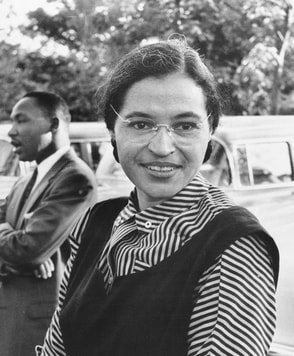
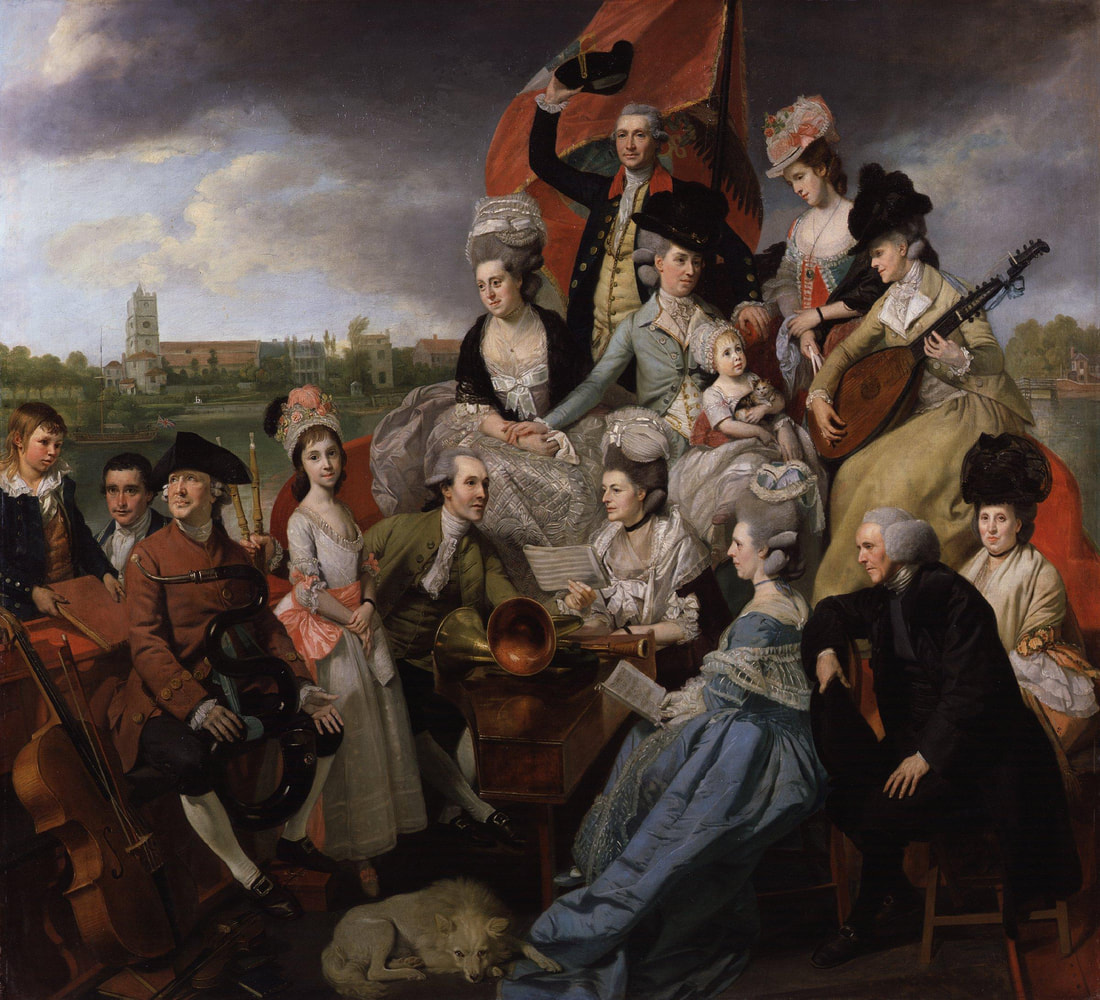

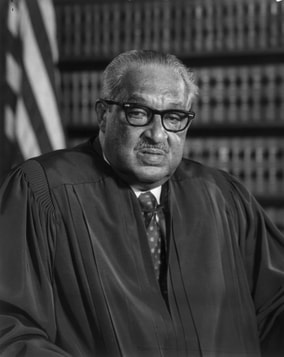

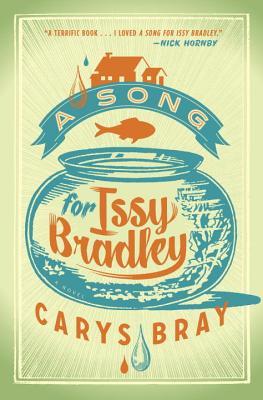
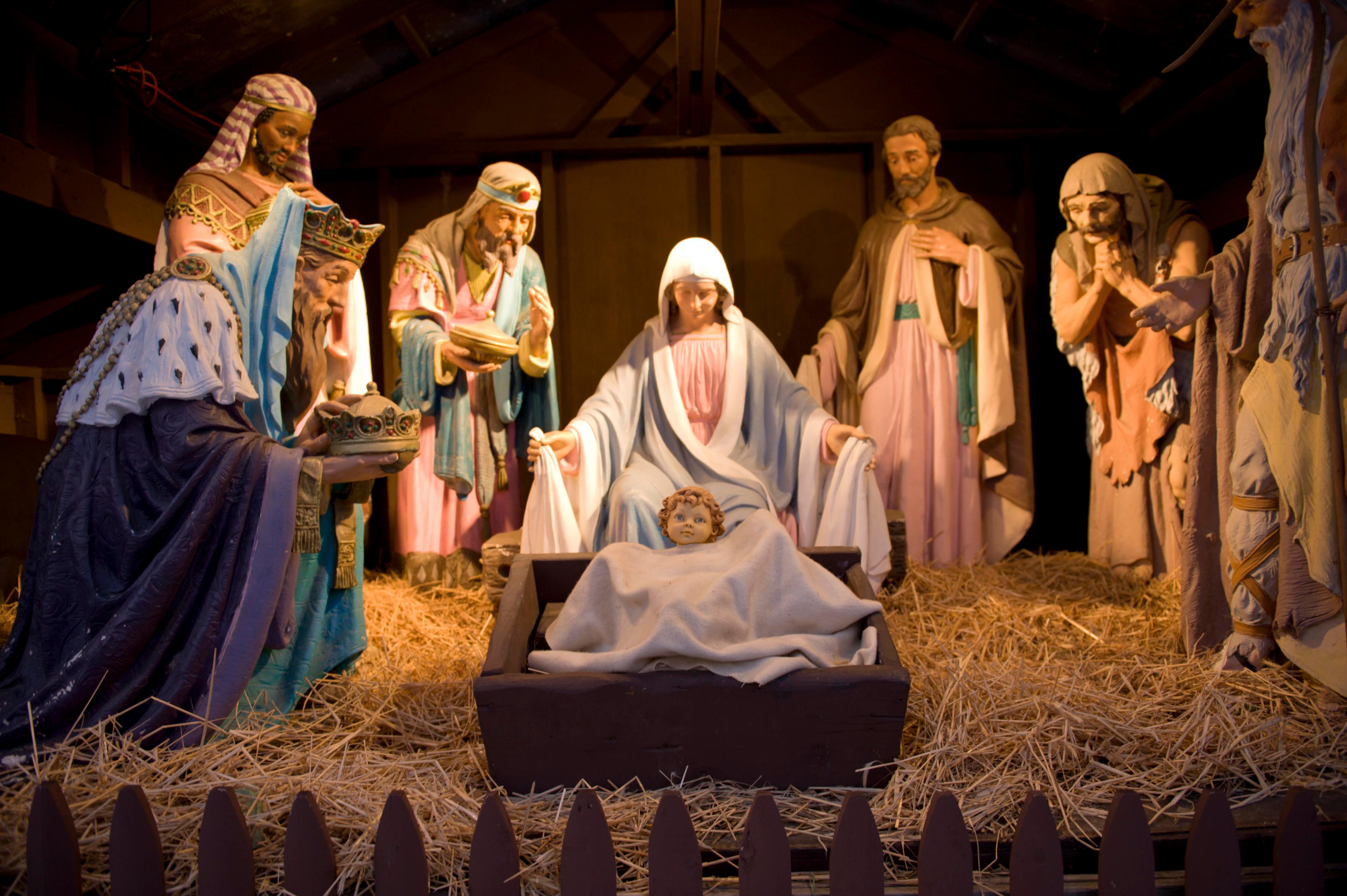
 RSS Feed
RSS Feed